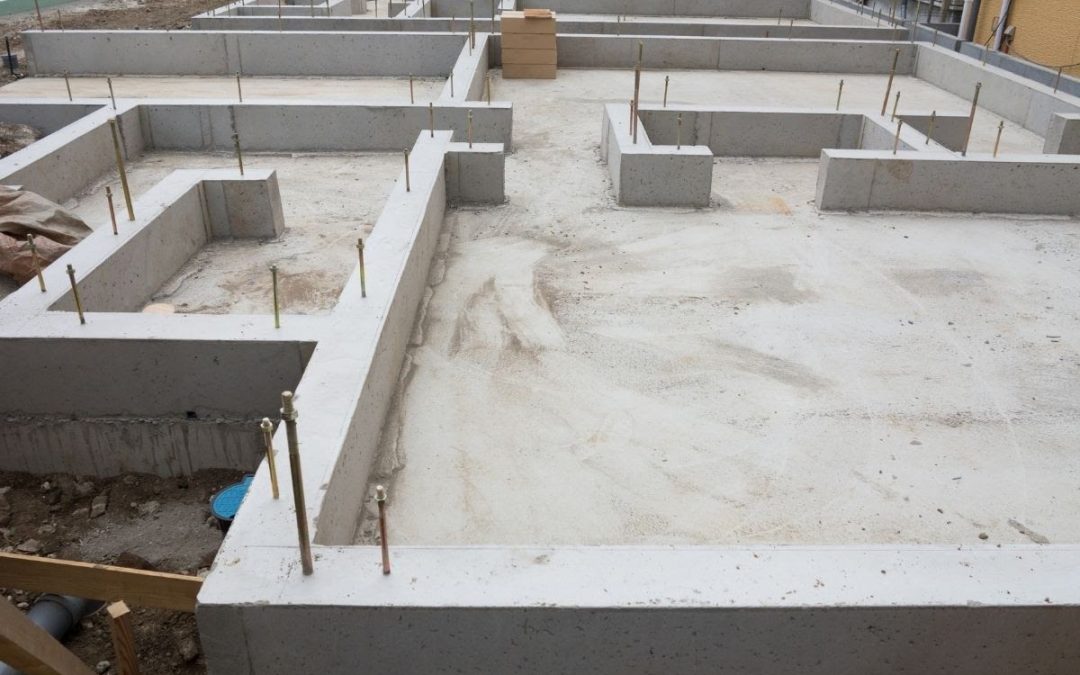Published February 11, 2021
In any construction project, the right foundation is essential. This holds whether you’re building a massive skyscraper or a humble house. Foundations play two primary roles in any building. The first is distributing the load evenly to the ground underneath it. And the second is keeping moisture that can damage your structure out. But choosing the right foundation is not as straightforward as it seems. Different types of foundations cater to specific needs and environments. In this article, we’ll be talking about the types of foundations and their uses.
The Two Main Classifications of Foundations
Foundations have two general classifications, namely shallow and deep.
- Shallow foundations are useful for soil strong enough to withstand a heavy load at a shallow depth. You will normally see these in small houses and buildings. This type of foundation is typically the wider and more economical of the two. It’s more economical, as it saves you from digging and boring costs and is generally less taxing to install.
- Deep foundations are used when building on less suitable soil or sand. These are useful when the topsoil doesn’t have as much load-bearing capacity as needed. In these cases, you’ll need to establish the foundation deeper underground on the stronger layers of the earth. Some structures may even need underwater foundations like bridges, dams, and piers. That being said, deep foundations are the go-to for larger structures. Naturally, constructing these will be much more expensive and tedious.

Types of Shallow Foundations
Individual Footing
The first and most common type of foundation is individual footing. Individual footing is named that way, as each column or pillar has its respective pad underneath it. It is also referred to as pad foundation. The shape of these foundations is typically square, rectangle, or something similar. Their size is determined by the amount of load they’re designed to bear and the safe bearing capacity of the soil.
Mat Foundation
Mat foundations fully leverage the surface area where a building will be established. In most cases, the entire basement floor is used as a foundation. This type of foundation is especially needed when the soil underneath is loose and requires the weight to be distributed evenly. When columns and walls are under heavy load, mat foundations are a great way to avoid differential settlement that individual footing may bring.
Combined Footing
Combined footing is similar to individual footing for using pads under its columns. The only difference is that with combined footing, columns are close enough to share pads. This means that the base effectively supports the weight of two load-bearing columns. Expect these foundations to be in the shape of a rectangle.
Stem Wall Foundations
Stem wall foundations are needed for buildings that have load-bearing walls instead of columns and pillars. These foundations run the length of the walls and are usually made out of reinforced concrete. Stem wall heights differ from location to location, depending on the terrain and flooring system. It isn’t uncommon to have a slab or crawl space on top of them as well.
Types of Deep Foundations
Pile Foundations
The most widely used deep foundations are the pile foundations. They’re further subdivided into two main types: end-bearing piles and friction piles. Piles are long cylinders made of concrete, steel, or wood. These piles are pushed deep into the ground so that they may support the load of the structures on top of it. They’re used when the top layer of earth is low-density and weak, unable to support the weight of the structure above it. Piles effectively transmit the load to deeper hard soil strata, where other methods may not.
- End-bearing piles: With end-bearing piles, the bottom end of the pile rests on the hard soil strata or rock. The load of the structure is transferred through this pile onto that dense layer. In that sense, you may think of the piles as columns. The crucial thing with end-bearing piles is that you must have them deep enough to bypass the weak layer and rest on the strong layer.
- Friction piles: Friction piles work differently. Instead of the load being concentrated on the end of them, they’re transferred to the soil across their entire height. To put it into perspective, let’s say you have a flag on a 2-meter stick. If you plant that stick in the soil at a depth of 5 inches, there’s a high chance it will topple over. Now, imagine if you plant that stick deeper at 1-meter. Barring a massive hurricane, it should hold, right? The same concept applies to friction piles. The longer the piles are and the deeper they are planted, the more load they can handle.
However, with piles, it should be noted that most modern constructions use a mix of both types.
Drilled Shafts or Caisson Foundations
Also known as pier foundations, caisson foundations are typically dug or submerged in water so as to reach the solid bedrock. They’re hollow substructures constructed near or on the ground surface before being sunk to the desired level. These provide structural integrity, water resistance, maintenance opportunities, and more. Caisson foundations have an incredible load-bearing capacity and are perfectly suited for bridges.
Interested In Cutting Technologies?
For nearly 40 years Cutting Technologies (CTI) has been the go-to demolition contractor for technically demanding, one-off jobs. Our wealth of experience enables CTI to bring “outside-of-the-block” approaches to achieve the impossible. Contractors trust CTI to get the job done right. Take a look at our demolition services on our website.

About The Author
Terrence Tan Ting is an industrial engineer by profession but a full time writer by passion. He loves to write about a wide range of topics from many different industries thanks to his undying curiosity.

